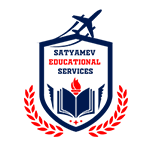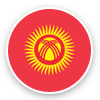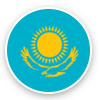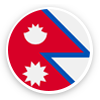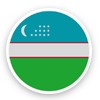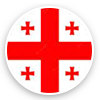
Month of intake in Kazakh National Medical University
Sep.
Year of Establishment
1931
Duration of MBBS Program
6 Years
Language of Instruction
English
Recognition
MCI & WHO Approved
Month of intake in Kazakh National Medical University: September
Year of Establishment: 1931
Duration of MBBS Program : 6 Years
Language of Instruction: English
Recognition: MCI & WHO Approved
Kazakh National Medical University
is a university in Almaty, Kazakhstan.
It is the no.1 medical institute in all of Kazakhstan. Many of Kazakhstan’s leading
physicians are affiliated with the university. It is dedicated to S.D. Asfendiyarov who was
the first rector when the university was established in 1931. In 2001, the government classified it as a “national” university. There are more than 11000 students, PhD students
study at KazNMU, and there are more than 1500 faculty members working at KazNMU,
including more than 200 doctors of science, 130 professors, more than 500 candidates of science and 15-laureates of State prizes.
Faculties
Mission
Kazakh National Medical University im.S.D.Asfendiyarova – is an
innovation-oriented and socially-responsible University, is a leader in Central
Asia in preparation of competitive multi-level heal th rof e ssionals and
pharmacies through the implementation of the competency-based model of
medical and pharmaceutical education, with extensive involvement of local
and for e ign s c i entists and constant reinforcement of the scientific
potential.
Our present and future
There is nothing closer than tomorrow, There is nothing more than yesterday
~Kazakh proverb
Kazakh National Medical
University SD Asfendiyarov
In 1930, the Decision of the CPC of the RSFSR was opened the first institute in Kazakhstan. He was appointed rector of the graduate of the Leningrad Military Medical Academy Sanjar Dzhafarovich Asfendiyarov.
For merits in the development of public health medical institute in April 1981 he was awarded the Order of the Red Banner of Labor.
In 2001, the Kazakh State Medical University SD Asfendiyarov awarded the high status of the National University.
University SD Asfendiyarov
In 1930, the Decision of the CPC of the RSFSR was opened the first institute in Kazakhstan. He was appointed rector of the graduate of the Leningrad Military Medical Academy Sanjar Dzhafarovich Asfendiyarov.
For merits in the development of public health medical institute in April 1981 he was awarded the Order of the Red Banner of Labor.
In 2001, the Kazakh State Medical University SD Asfendiyarov awarded the high status of the National University.
Facts about Kazakhstan
President Nazarbayev: Kazakhstan’s leader for more than two
decades State: Independent since 1991. Capital – Astana.
Population – about 15 million (57% Kazakh, 30% Russian, 4%
German, 3% Ukrainian: other significant minorities include
Uighurs, Uzbeks, Belorussians, Dungans, Koreans, Chechens, and
Gr e e k s). P r e si d e n t – Mr. Nu rs u l t a n Na z a r b a y e v.
Language: The official language is Kazakh, a Turkic language
closely related to Uzbek, Kyrghyz, Turkmen and Turkish. The Government has undertaken to
replace the Russian Cyrillic alphabet with the Turkish version of the Roman alphabet. However,
the Cyrillic alphabet is currently still in general use, and most people in the cities speak Russian,
whereas in rural areas people tend to speak only Kazakh. the younger
generation and people working in tourism often speak English. Uighur and other regional
languages and dialects are also spoken.
21st century Almaty
The new 2030 General Plan of Almaty was
developed in 1998 and aims at forming
ecologically safe, secure and socially
comfortable living conditions. The main objective
is to promote Almaty’s image as a garden-city.
One of the components of the General Plan is to
continue multi-storied and individual construction, reorganize industrial territories, improve
transport infrastructure and launch Almaty Metro. Almaty can easily be considered the most
pleasant and vibrant city in Central Asia. With exciting nightlife, live performances, a
cosmopolitan population, beautiful mountains and history everywhere you turn, Almaty is a
great place to live, study, have a fun and gain new knowledge.
Akanov Icahn Akanovich
Organizer of Health, MD (1992), Professor (1994),
honored RK “Excellence in Health of Kazakhstan”,
“Madeniet kairatkeri.”
He graduated from Almaty State Medical Institute in 1974 on specialty “medical business”. He worked
as a general practitioner, the head of the clinic Kegen CRH Almaty region (1975-1978).
Since 1978, he began to engage in scientific scientific activities activities in the treasur treasury of Cardiology Cardiology. In 1984 he graduated graduated from the Almaty Institute Institute of Foreign Foreign Languages. Languages. In 1986 he defended defended his thesis in 1992 – a doctoral doctoral thesis on “Epidemiology “Epidemiology and prevention prevention of chronic chronic non-communicable non-communicable diseases diseases among the rural population population of the Republic of Kazakhstan.”
In the years 1994-1995 – Head of science, education and medical staff of MH RK. In 1996 he was transferred to the Office of the Government of the Republic of Kazakhstan to the post of deputy head of the department of social and cultural development. In 1997 – Vice-Minister of Health, 1998-1999 – first deputy chairman of the Health Committee of the Ministry of health, education, culture and sports. In 1999-2001, the general director of the National Center for Healthy lifestyle. 2001 – Head of the Department of Health Office of the Prime Minister of the Republic of Kazakhstan, 2002-2004 – Director General of the National Center for problems of healthy lifestyle, 2004-2006 – First Deputy Minister of Health, 2006-2007 – Director of the Institute of Public Health, 2007- 2008 – Visiting professor of Nagasaki University (Japan), from April 2008 to present – Rector KazNMU them. SD Asfendiyarov in the period 1996-2000 – WHO expert.
Author of over 400 scientific papers, including 82 monographs. Prepared 17 candidates and 15 doctors of medical sciences.
Since 1978, he began to engage in scientific scientific activities activities in the treasur treasury of Cardiology Cardiology. In 1984 he graduated graduated from the Almaty Institute Institute of Foreign Foreign Languages. Languages. In 1986 he defended defended his thesis in 1992 – a doctoral doctoral thesis on “Epidemiology “Epidemiology and prevention prevention of chronic chronic non-communicable non-communicable diseases diseases among the rural population population of the Republic of Kazakhstan.”
In the years 1994-1995 – Head of science, education and medical staff of MH RK. In 1996 he was transferred to the Office of the Government of the Republic of Kazakhstan to the post of deputy head of the department of social and cultural development. In 1997 – Vice-Minister of Health, 1998-1999 – first deputy chairman of the Health Committee of the Ministry of health, education, culture and sports. In 1999-2001, the general director of the National Center for Healthy lifestyle. 2001 – Head of the Department of Health Office of the Prime Minister of the Republic of Kazakhstan, 2002-2004 – Director General of the National Center for problems of healthy lifestyle, 2004-2006 – First Deputy Minister of Health, 2006-2007 – Director of the Institute of Public Health, 2007- 2008 – Visiting professor of Nagasaki University (Japan), from April 2008 to present – Rector KazNMU them. SD Asfendiyarov in the period 1996-2000 – WHO expert.
Author of over 400 scientific papers, including 82 monographs. Prepared 17 candidates and 15 doctors of medical sciences.
Department of General Medicine
Government Resolution of April 24, 2006 317 adopted the Concept of reforming of medical and
pharmaceutical education of the Republic of Kazakhstan. According to the accepted concept of training
specialists with higher medical education is provided as part of basic medical education in the specialty
“general medicine”. For the training of physicians in the specialty “general medicine” has been prepared by
the state standard of education, which laid the core competencies of the graduate.
In 2007, it adopted the first set of students to the university on a specialty “general medicine”. For the realization and implementation of the learning process of a new generation of JI and the faculty of general medicine.
For the organization of educational process on a specialty “General Medicine” Rector’s order 874-L from 09.02.2007, was created by the dean’s office of the Faculty of General Medicine. State deanery consisted of dean, deputy dean of the three bets and one bet secretary. Dean of the Faculty was appointed PhD, assistant professor Dzhumasheva Rahim Tazhibae v na. I ts deputies w e r e Kashaga nova KT, Baygamysova DS, Musayev GA, WA Nuralieva secretary Aitbaeva M.
According to the order 312 from 24.09.07 Rector, was created the Scientific Council of the Faculty of General Medicine, in its composition by order 23 of 28.08.07, “On consolidation of departments of the Faculty of” inputs, such as the chair of the department of normal physiology with a course valeology, Histology normal anatomy, molecular biology and genetics, medical biophysics, computer science and mathematical statistics, the Kazakh language, the Russian language of chemistry, communication skills, psychotherapy, bases of general and clinical psychology.
Currently, the Faculty of General Medicine is one of the leading departments of the university.
Among the teaching staff of the Faculty of famous scientists: Academician of NAS RK Head of the Department of normal anatomy A.R.Rakyshev, Honored Scientist, Professor, Department of normal physiology Satpayev HK, professor, doctor of medical sciences, AD Sokolov, Abisheva ZS, Kuandikov EW, Yu RI, MA Asimov, Esenzhanova GM Khamzin AH, Pichkhadze GM Nurmukhambetov AN Irzhanov C. I. and many others. In the departments of the Faculty of General Medicine are working 331 teachers including 29 doctors, 117 candidates of sciences; 3670 students are enrolled in the Kazakh, Russian and English.
The Faculty of General Medicine consists of 14 departments, headed by well-known professors and associate professors.
Since its foundation, the work is aimed at faculty development program of the Faculty in accordance with the requirements of time and KazNMU Development Strategy, as well as a set of measures in all directions in order to make the faculty of the flagship, to strengthen the feeling of patriotism among the students, professional interest and motivation to learn
In 2007, it adopted the first set of students to the university on a specialty “general medicine”. For the realization and implementation of the learning process of a new generation of JI and the faculty of general medicine.
For the organization of educational process on a specialty “General Medicine” Rector’s order 874-L from 09.02.2007, was created by the dean’s office of the Faculty of General Medicine. State deanery consisted of dean, deputy dean of the three bets and one bet secretary. Dean of the Faculty was appointed PhD, assistant professor Dzhumasheva Rahim Tazhibae v na. I ts deputies w e r e Kashaga nova KT, Baygamysova DS, Musayev GA, WA Nuralieva secretary Aitbaeva M.
According to the order 312 from 24.09.07 Rector, was created the Scientific Council of the Faculty of General Medicine, in its composition by order 23 of 28.08.07, “On consolidation of departments of the Faculty of” inputs, such as the chair of the department of normal physiology with a course valeology, Histology normal anatomy, molecular biology and genetics, medical biophysics, computer science and mathematical statistics, the Kazakh language, the Russian language of chemistry, communication skills, psychotherapy, bases of general and clinical psychology.
Currently, the Faculty of General Medicine is one of the leading departments of the university.
Among the teaching staff of the Faculty of famous scientists: Academician of NAS RK Head of the Department of normal anatomy A.R.Rakyshev, Honored Scientist, Professor, Department of normal physiology Satpayev HK, professor, doctor of medical sciences, AD Sokolov, Abisheva ZS, Kuandikov EW, Yu RI, MA Asimov, Esenzhanova GM Khamzin AH, Pichkhadze GM Nurmukhambetov AN Irzhanov C. I. and many others. In the departments of the Faculty of General Medicine are working 331 teachers including 29 doctors, 117 candidates of sciences; 3670 students are enrolled in the Kazakh, Russian and English.
The Faculty of General Medicine consists of 14 departments, headed by well-known professors and associate professors.
Since its foundation, the work is aimed at faculty development program of the Faculty in accordance with the requirements of time and KazNMU Development Strategy, as well as a set of measures in all directions in order to make the faculty of the flagship, to strengthen the feeling of patriotism among the students, professional interest and motivation to learn
Life in Almaty
Almaty view
Almaty, also known by its former names Verny and
Alma-Ata, is the former capital of Kazakhstan and
the nation’s largest city, with a population of
1,404,000 (2010). This represents approximately
9% of the population of the country.
Almaty was the capital of the Kazakh SSR and its
successor Kazakhstan from 1929 to 1997. Despite
losing its status as the capital to Astana in 1997,
Almaty remains the major commercial center of
Kazakhstan. The city is located in a mountaineous
area of southern Kazakhstan, near the border with
Kyrgyzstan.
Almaty facts
The word “Almaty” in Kazakh people language
means “grown with apple trees”. The first Kazakh
scholar Chokan Valikhanov observed: “Almaty city
was known for its trade and was a trading post on
a high road.” Apples were no doubt one of the
important commodities. Anyway, Alma-Ata city
has been famous for them to this day.
Almaty is located in an area of extensive geologic
risk, being subject to both earthquakes and
mudslides. Almaty city suffered from severe
earthquakes in 1887 and 1911, and a mudflow
down the Malaya Almaatinka in 1921 caused
considerable destruction and loss of life.
To reduce the risks of future mudslides, an artificial
landslide was precipitated by explosives in 1966
to dam nearby Medeo gorge. The 330-foot dam
that resulted proved its worth in 1973 by holding
back a potentially catastrophic mudslide. Later
improvements have raised the dam to 460 feet and
further improved the security of Almaty.
Almaty attractions
Almaty houses Kazakhstan Academy of Sciences
and its many subordinate research institutes,
numerous museums, an opera house, theaters
producing in Russian, Kazakh and Uighur, and
Pushkin State Public Library.
Almaty also has a botanical garden, a zoo, several
stadiums, and the permanent Kazakhstan
Exhibition of Economic Achievements.
Today Almaty city extends about 12.5 miles (20
km) in all directions from its center and is
considered one of the most beautiful cities of
Kazakhstan, with regular planning, wide, treelined streets, numerous parks and orchards, and a
backdrop of mountains.
Mount Kok-Tyubeh offers a picturesque panorama of Almaty. Far below the residential districts can be seen buried in verdure. At the foot of the mountain to the north stretches a plain, and to the south, just a stone’s throw away, so it seems, are snowcapped mountains rising as high as five kilometers. The former Ascension Cathedral of Almaty city, built in 1907 and the second highest wooden building in the world, now houses a museum. Of the population of Almaty city, Russians make up about 60 percent, with the remainder made up chiefly of Kazakh (less than one-quarter), Ukrainian, Uighur, Tatar, and German minorities. Almaty city is a major cultural center. Besides Abai Kazakh Academic Opera and Ballet Theater, which is the pride of national musical culture, Almaty has a drama theater named after Kazakh writer Mukhtar Auezov (1897-1961). Almaty city also has a Russian, an Uigur and several Korean theaters and a number of other troupes.
Today in Almaty city there are 16 higher education establishments, including a university, and dozens of general education and technical secondary schools and vocational schools.
Mount Kok-Tyubeh offers a picturesque panorama of Almaty. Far below the residential districts can be seen buried in verdure. At the foot of the mountain to the north stretches a plain, and to the south, just a stone’s throw away, so it seems, are snowcapped mountains rising as high as five kilometers. The former Ascension Cathedral of Almaty city, built in 1907 and the second highest wooden building in the world, now houses a museum. Of the population of Almaty city, Russians make up about 60 percent, with the remainder made up chiefly of Kazakh (less than one-quarter), Ukrainian, Uighur, Tatar, and German minorities. Almaty city is a major cultural center. Besides Abai Kazakh Academic Opera and Ballet Theater, which is the pride of national musical culture, Almaty has a drama theater named after Kazakh writer Mukhtar Auezov (1897-1961). Almaty city also has a Russian, an Uigur and several Korean theaters and a number of other troupes.
Today in Almaty city there are 16 higher education establishments, including a university, and dozens of general education and technical secondary schools and vocational schools.
Campus
Almaty Nurly-Tau
The campus of KazNMU is situated in a picturesque area in the center of Almaty
There are: Central stadium and sports complex «Baluan Sholak», Circus, Theatre, cinemas “Celinnyj», «Cinema Towers», parks, mountain river “Vesnovka”, hypermarket “Promenade”, a large number of cafes, restaurants and snack bars, a bowling center, shops, and many others near the campus.
Abai’s Theater (National Academical Theater of Opera and Ballet) The university has all the necessary infrastructure and takes into account all the needs and necessities of the students: their study, life, sports, recreation, treatment and other aspects of students life.
Halls of Residence KazNMU’s residence hall has space for 2198 students, accommodated in shared, single-sex rooms. 2, 3, 4-seater, standard furnished rooms are equipped with all the necessities for comfortable living and leisure for students.
There are: Central stadium and sports complex «Baluan Sholak», Circus, Theatre, cinemas “Celinnyj», «Cinema Towers», parks, mountain river “Vesnovka”, hypermarket “Promenade”, a large number of cafes, restaurants and snack bars, a bowling center, shops, and many others near the campus.
Abai’s Theater (National Academical Theater of Opera and Ballet) The university has all the necessary infrastructure and takes into account all the needs and necessities of the students: their study, life, sports, recreation, treatment and other aspects of students life.
Halls of Residence KazNMU’s residence hall has space for 2198 students, accommodated in shared, single-sex rooms. 2, 3, 4-seater, standard furnished rooms are equipped with all the necessities for comfortable living and leisure for students.
